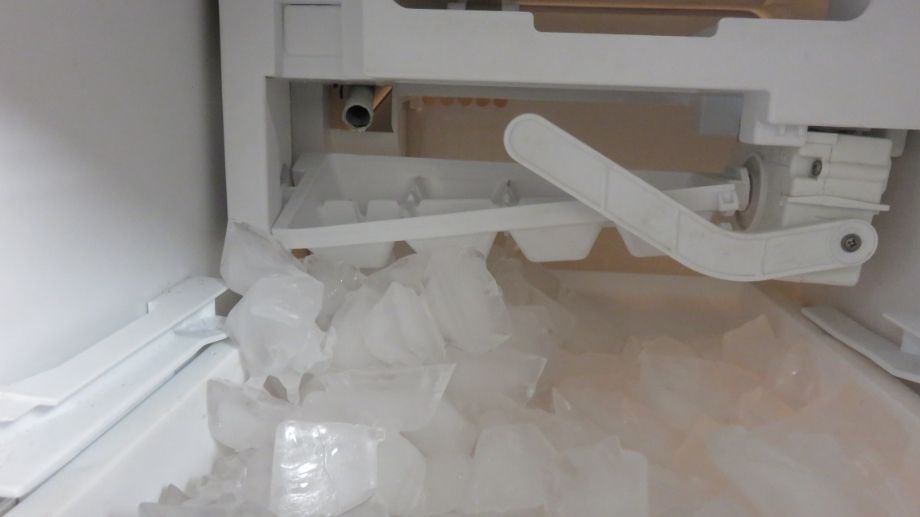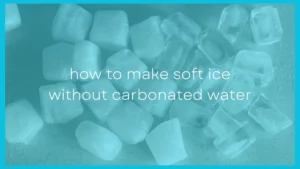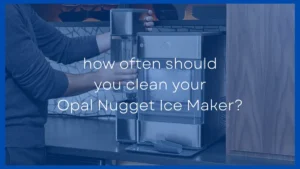When you reach into your freezer to grab a few ice cubes, it should be simple. No one wants to keep a pickaxe on top of their freezer to chisel ice cubes apart every time they want a cold drink.
To keep ice from sticking together in an icemaker, there are a few things you need to do:
To stop ice from sticking together in an ice maker you need to turn your freezer down as cold as possible to stop the ice from slightly melting and refreezing and sticking together. Break ice up every week or so and discard old ice at the bottom of the tray.
There are a whole bunch of other things you can do to stop the ice in your ice maker from sticking together.
This article will explain nine different ways to keep your ice cubes from sticking together in your ice maker. Some of these tips are quick fixes, and others are more long-term. Try out a few and see what works best for you!
1. Keep Your Freezer at the Right Temperature
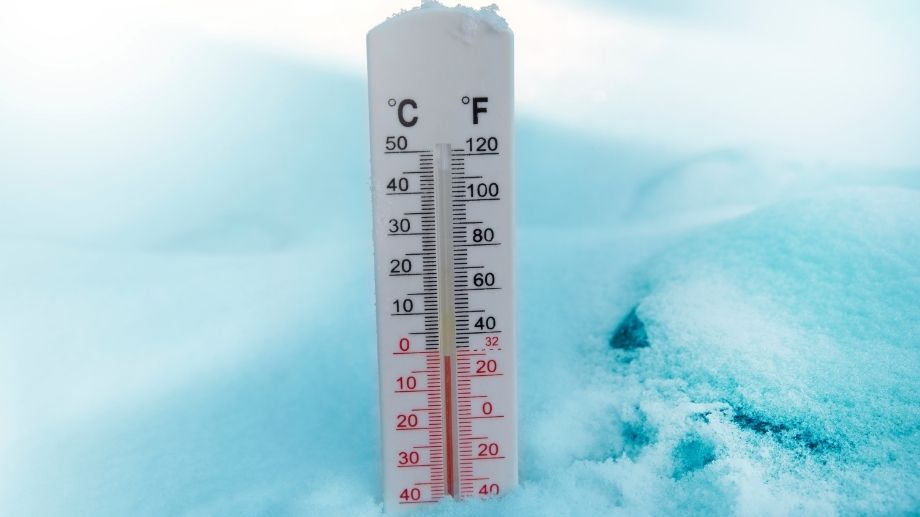
If ice is sticking together in your ice maker it may be due to the fact that your freezer isn't quite cold enough.
While you likely don't notice it ice usually contains a very thin layer of water on the outside of each ice cube. This layer of water exists in equilibrium with the ice with some water molecules freezing into ice and some ice molecules melting into water.
The warmer the ice is the thicker this layer of water is and the more likely ice is going to get stuck together. This especially happens when an ice cube melts but it can even happen inside a freezing cold freezer.
By turning your freezer down to its coldest temperature your ice is more likely to stay solid and less likely to partially melt and refreeze back together.
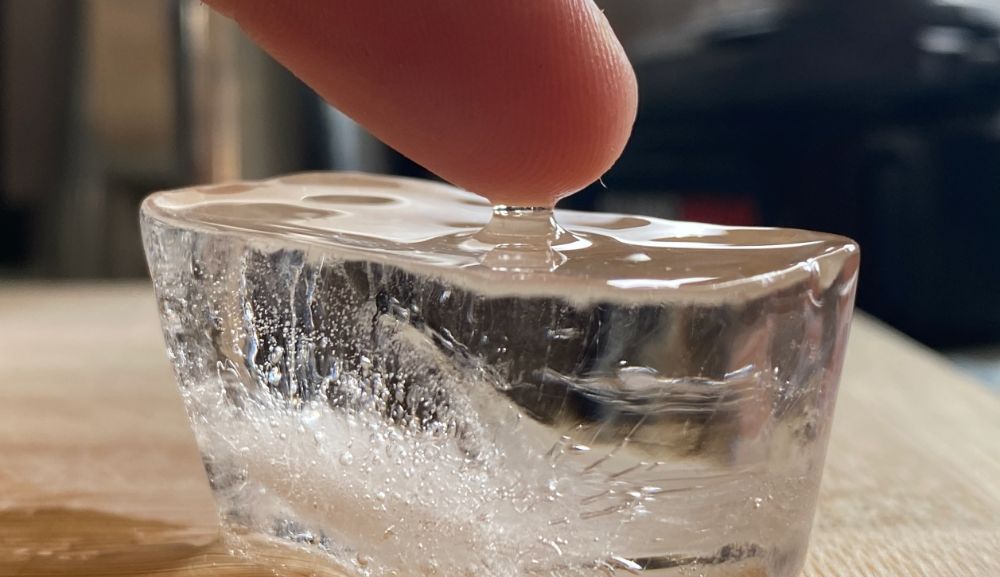
If your freezer is too warm, you’ll have trouble with your ice. While ice freezes at 32ºF (0ºC) you actually want to have your freezer much colder than this.
The ideal freezer temperature is 0°F (-18°C). Your freezer may be affected by its location and the outside humidity. On hot days your freezer will have to work harder to stay a consistent temperature.
To change your freezer temperature, look for a control panel inside the freezer. If you have a connected refrigerator, the panel may be inside the refrigerator section.
The most important thing to remember when adjusting the temperature is to make small changes.
2. Minimize Moisture
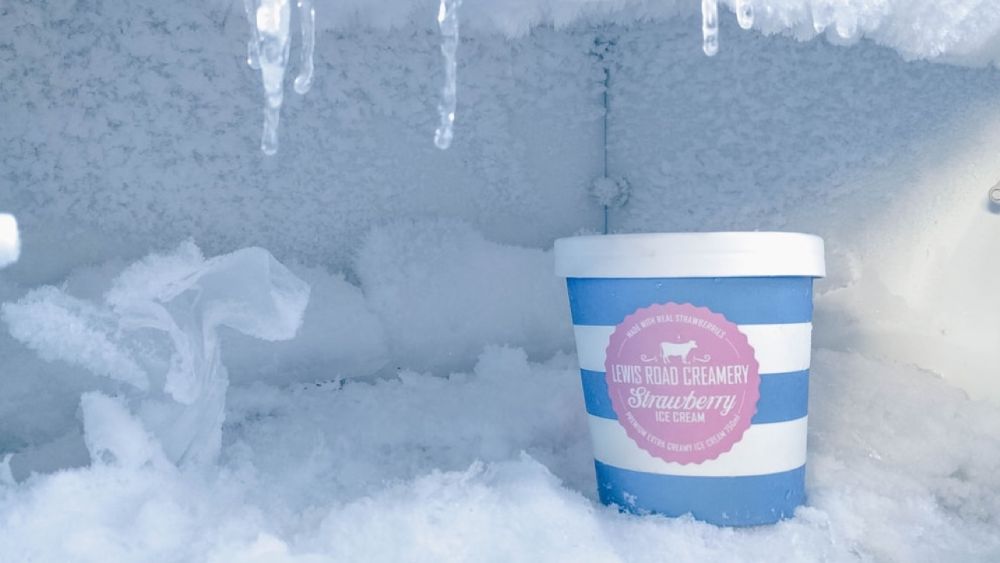
Moisture in the air in your freezer will condense and then freeze into ice. This is why you find that ice cubes get flakes on the outside of them the longer they are in your freezer. It's also why the walls of your freezer can build up with ice over time and need to be defrosted.
Moisture can get into your freezer simply by opening the door and the air from your room getting into the freezer that way.
Also many fridge/freezer combinations use a single evaporator and air is cycled through both the freezer and the fridge.
This means if you put something moist in the fridge (eg. A warm soup you want to cool down to store) that moisture can end up in your freezer and cause your ice cubes to stick together. It can also make your ice taste bad even if your water is fine, so it's something to be aware of.
Avoid introducing moisture to your fridge where possible, but also keep ice in your ice cube tray away from the moisture if possible by having some sort of lid on it. Most ice makers in a freezer naturally have some sort of barrier between them and the rest of the freezer. It isn't airtight but it's better than having a completely open tray.
3. Break Up Ice Regularly
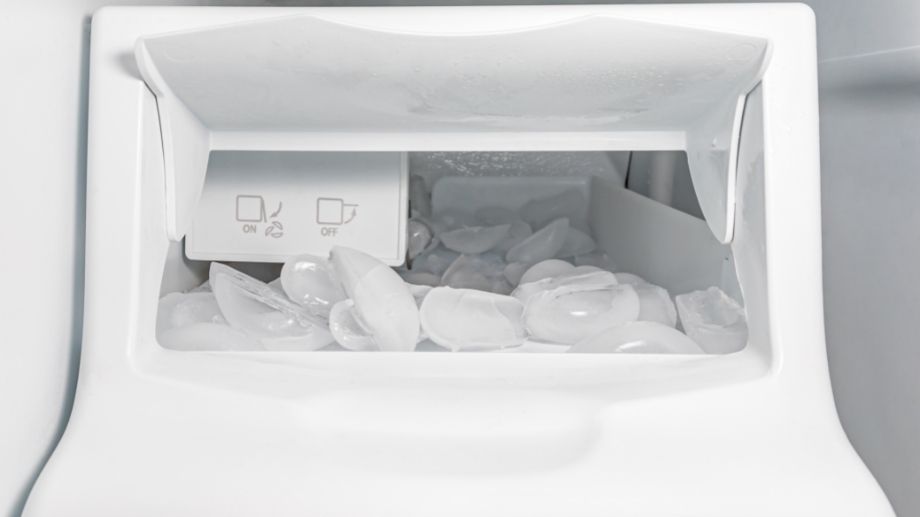
Over time ice will naturally stick together either through the melting/refreezing we mentioned above or through the buildup of frozen moisture sticking the cubes together.
The longer your ice cubes are in there the more likely this is to build up a thick layer of ice really sticking your cubes together.
Manually stirring your ice cubes every week or so helps to keep the cubes separated and stops this buildup.
When you do this, trying using a wooden spoon as the wood can actually absorb some of the moisture that causes the ice to freeze together.
4. Move Ice to the Back of Your Freezer
Every time you open the freezer door, the temperature inside the freezer rises. Items closest to the door are most affected by this change.
If your ice is near the door then it can slightly melt when the door is opened and refreeze when it is closed, causing it to stick together more.
By moving your icebox to the back of your freezer, you can minimize the temperature change of your ice.
The back of the freezer is also usually the coldest as its nearest the evaporator, so this will keep your ice super cold which will further reduce it sticking together.
5. Line Your Ice Box With a Paper Bag
A regular brown paper bag can keep ice from sticking together by absorbing excess moisture.
The best way to do this is to line the outside of your ice box with paper bags. It’ll work the same way as keeping the cubes directly in a bag but it's easier to do and less hassle. You can also consider using paper towels instead of paper bags.
Just make sure to replace them every so often.
Click here to read about 53 more amazing ice cube tray hacks to improve your life
6. Check Your Freezer Doors
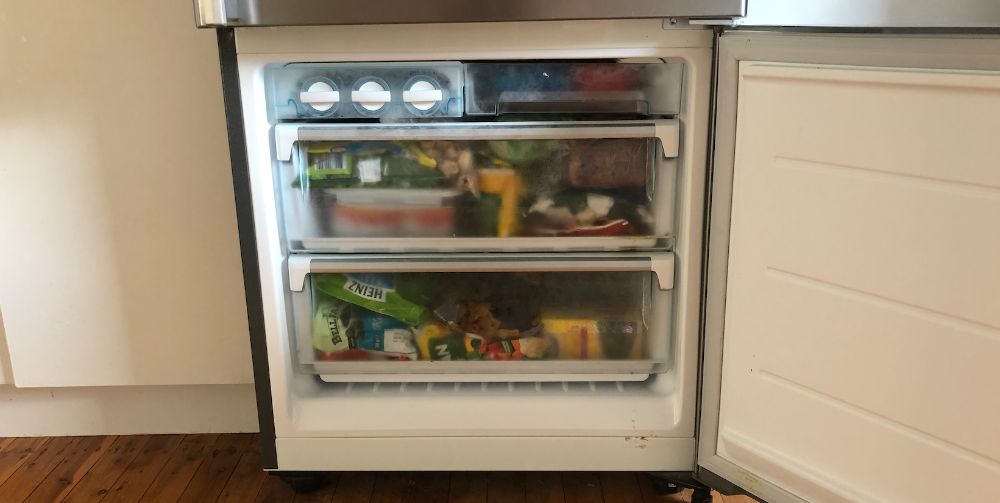
Make sure your freezer door closes completely. Ice is likely to stick together if your freezer isn’t air-tight. If your freezer has a light in it, you should see it turn off right before the door closes. However, if the light doesn’t turn off, it may be a sign that your door isn’t shutting completely.
If you have an ice dispenser on your freezer door, air could be leaking from the dispenser flap. The dispenser flap opens to dispense ice from the door and is meant to close tightly after it’s done. If it isn’t sealing completely, air could be leaking from your freezer that way.
My freezer door accumulates moisture over time which is a sign that the door isn't sealing properly. Ideally you should get this fixed if you have this same issue.
7. Fill Your Freezer
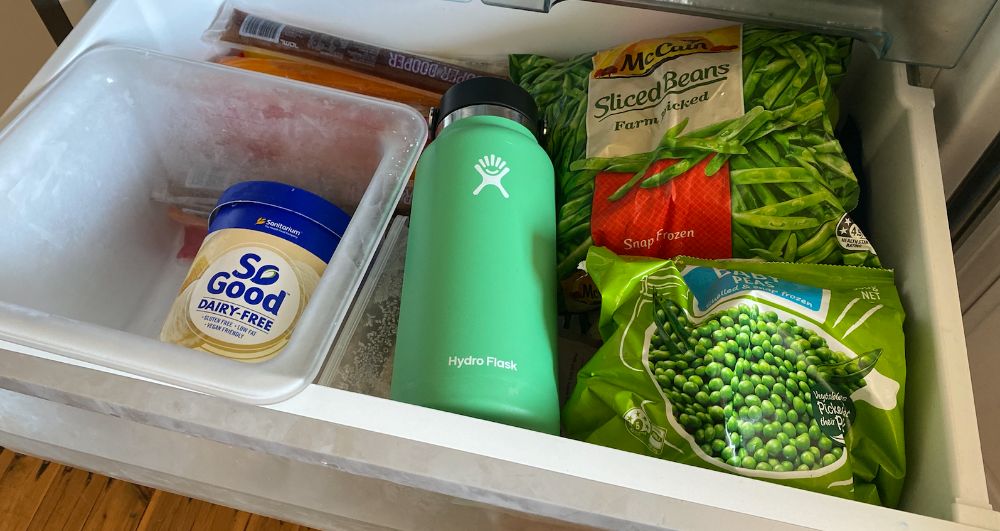
Most freezers occasionally run an automatic defrost cycle. While this is important to prevent frost from forming in the freezer, however the rise in temperature can cause ice cubes to absorb the heat, partially melt and stick together.
Keeping your freezer at least three-quarters full of food can help reduce the defrost cycle’s effect on your icebox.
I often don't have my freezer completely full because I don't have that much food. So what you can do is just fill up old soda bottles or milk bottles with water and put them in your freezer. They will turn to big blocks of ice and help to keep your freezer at a more constant temperature when the defrost cycles happen.
8. Keep Only the Ice You Need
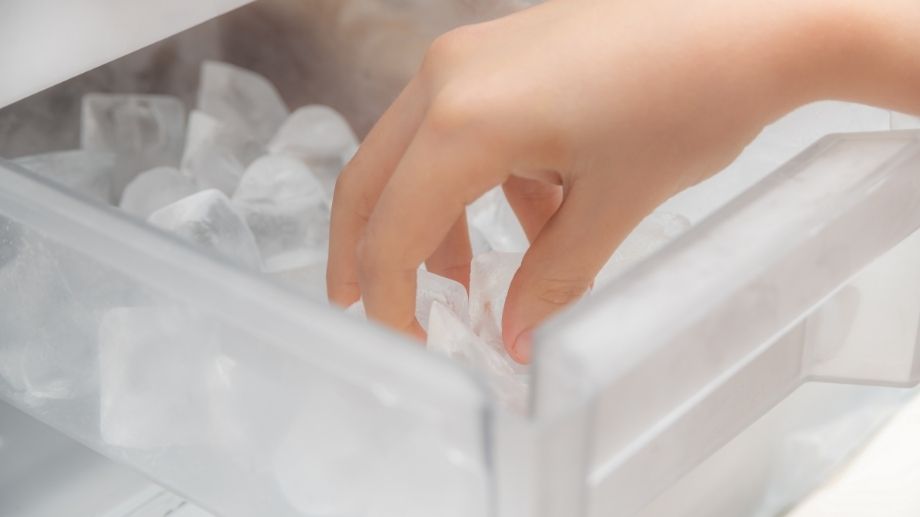
If you don’t use the ice in your machine within a month, it’ll begin to stick together. When ice sits in the maker for too long, it eventually starts to compress the bottom cubes, which causes them to freeze together.
If your ice maker is producing more ice than you’re able to use, you can turn the maker off for a bit. Often, ice makers have a little arm you can raise to pause the ice production. If your device doesn't have an arm, check the freezer’s user manual to determine how the function is performed.
Alternatively simply discard the ice that is in there by putting it on the sink to melt and allow new ice to replace it.
9. Clean Out Your Ice Bin
Once frost builds up in your ice bin, it can be hard to get rid of without starting fresh. To wash your ice bin, take it out of the freezer and allow it to warm up to room temperature. Then, you can wash it with dish soap and a sponge or washcloth, just like you would your regular dishes.
The most important thing to keep in mind is that you absolutely must allow the bin to dry completely before placing it back in the freezer. If any water is left in the bin, it’ll freeze again in the freezer and cause the same problem you had to begin with.
10. Put Ice Into Separate Bags
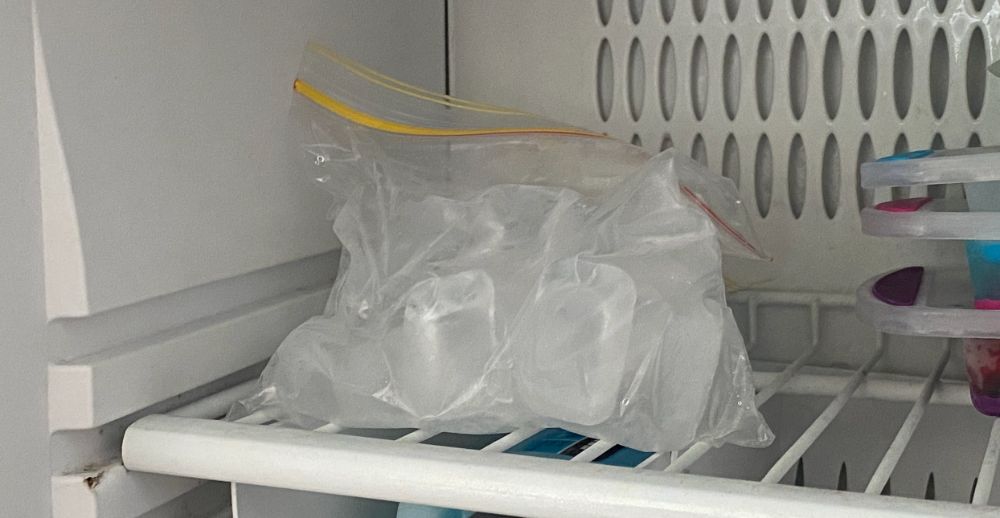
If you know it's going to be some time before you use your ice then it can be a good idea to separate it into individual bags of ice.
This will not only stop large amounts of ice sticking together but it'll also stop your ice from absorbing the bad smells and odors in your freezer. It'll keep them fresh. Just make sure the bags are air tight.
11. Spread Your Ice Out To Minimize Pressure
Just like how bags of ice on the bottom of a pile are usually stuck together the ice at the bottom of your ice machine can also get stuck together because of the weight and pressure of the ice above.
The deeper the layers the ice go the more pressure that is place on the bottom layer of ice. This begins to melt the bottom layer of ice which will then refreeze and stick to the ice cubes next to it. Below is a video explaining the process.
So spread your ice cubes out and keep them so there isn't a lot of weight above them which can melt them and make them stick together.
Key Takeaways
Excess moisture in your freezer can cause the surface of ice cubes to melt and then attach to one another as they refreeze. Once you understand why your ice is sticking together in your ice maker, it’s not difficult to fix the problem.
Life can get busy, and no one wants to spend their time fooling with an ice machine. Luckily, several of these tricks are one time fixes:
- Find the correct freezer temperature
- Place a paper bag around the icebox
- Move the ice bin to the back of the freezer
- Clean out the icebox
- Check your freezer doors

